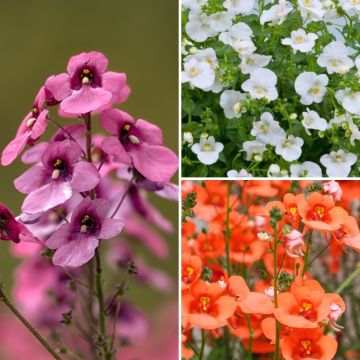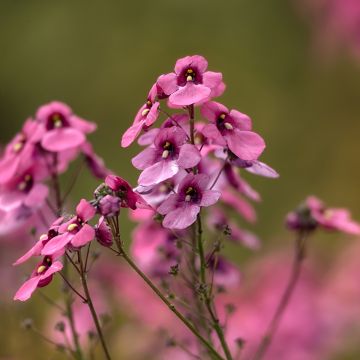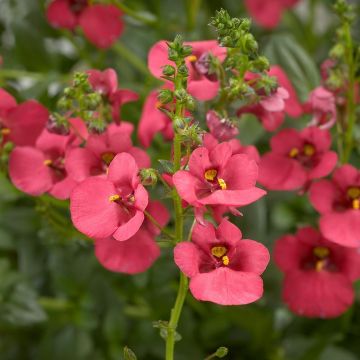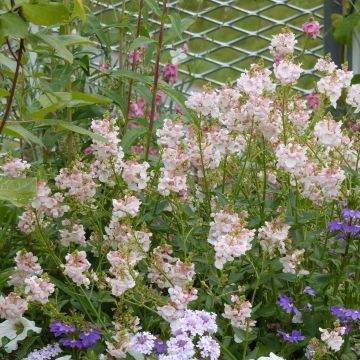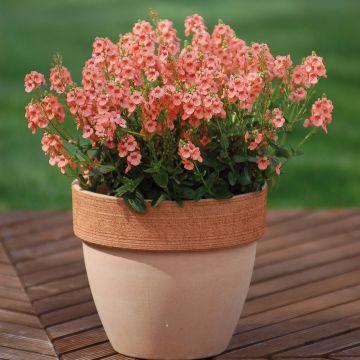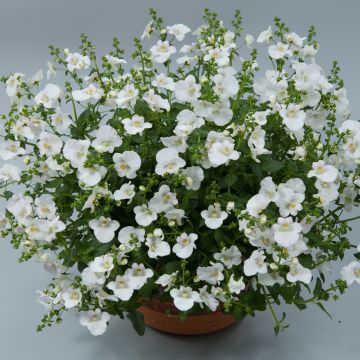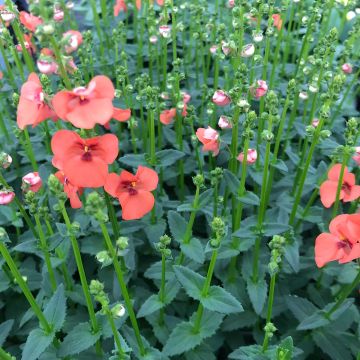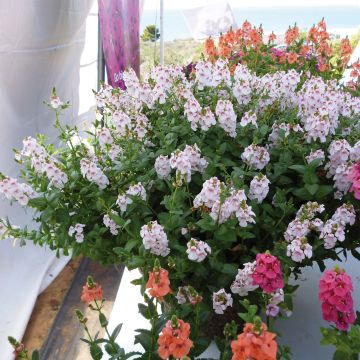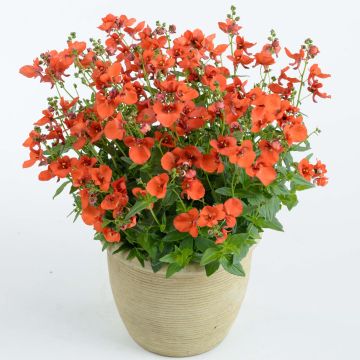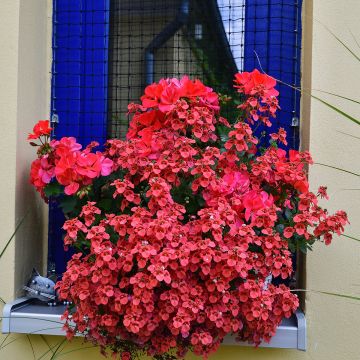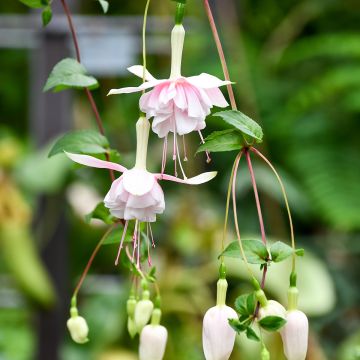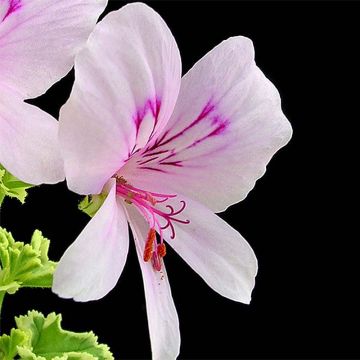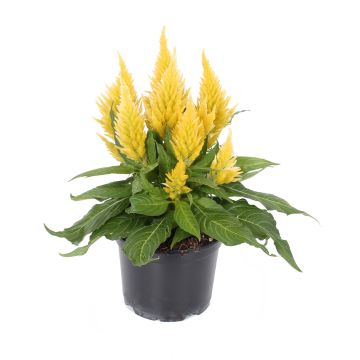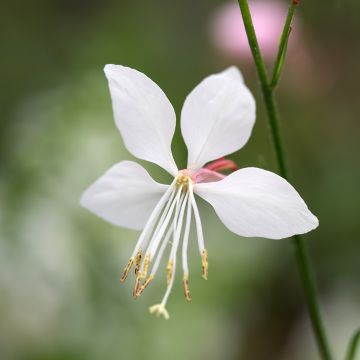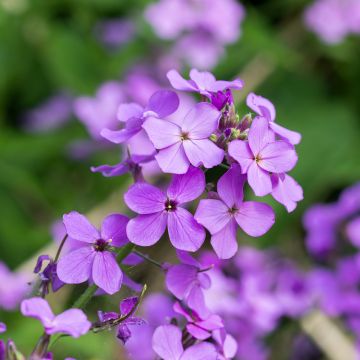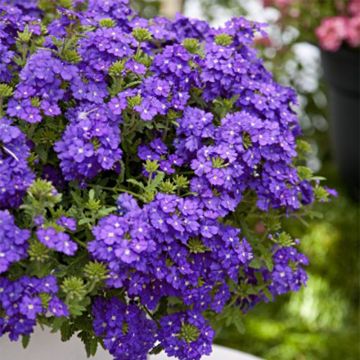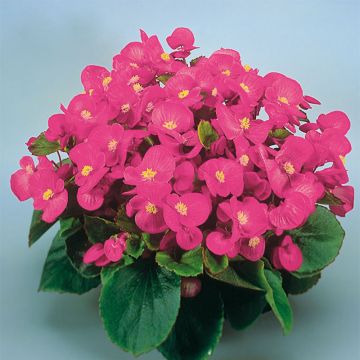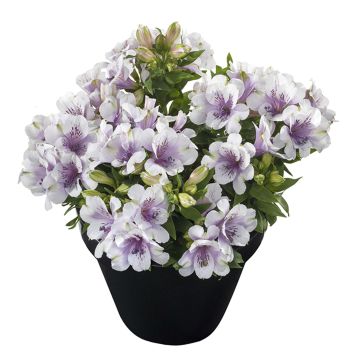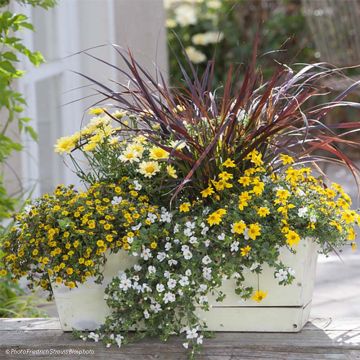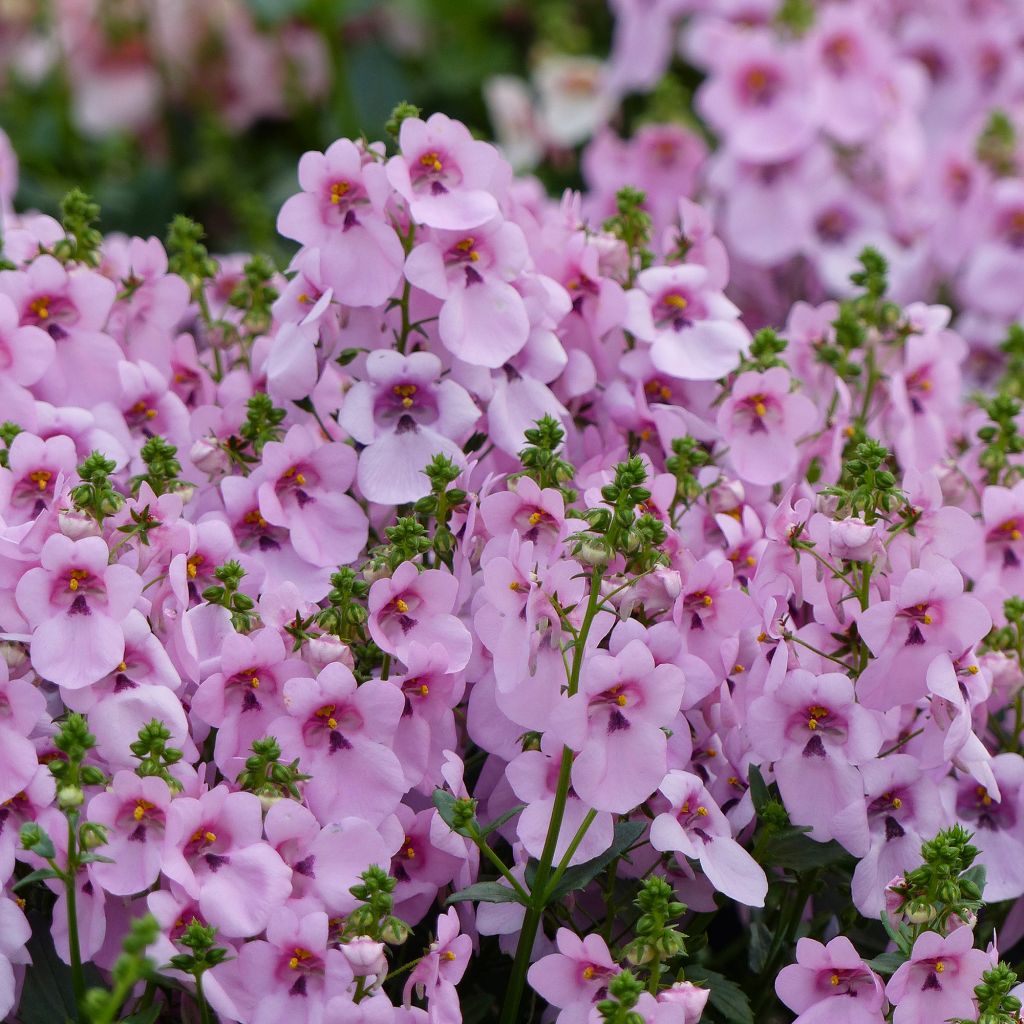

Diascia Breeze Plus Pastel - Diascie rose pâle
Diascia Breezee Plus Pastel
Diascia x barberae Breeze Plus Pastel
Why not try an alternative variety in stock?
View all →This plant carries a 6 months recovery warranty
More information
We guarantee the quality of our plants for a full growing cycle, and will replace at our expense any plant that fails to recover under normal climatic and planting conditions.
From €5.90 for pickup delivery and €6.90 for home delivery
Express home delivery from €8.90.
Does this plant fit my garden?
Set up your Plantfit profile →
Description
Diascia Breeze Plus Pastel is a vigorous new variety that flowers early with an abundance of blooms that are easy to associate. From spring until the first frost, it bears a profusion of small pale-pink flowers with double spurs and a darker throat. The flowers look sublime against its heart-shaped green leaves. This lovely annual will form beautiful columns, or can cascade beautifully from hanging baskets and planters. It will make delightful low edging plants, add an attractive quality to rockeries, or casually tumble over walls. Plant this pretty plant without moderation in well-drained soil, in non-burning sun.
Diascia Breeze Plus Pastel belongs to the Scrophulariaceae family. It is a cultivar derived from D. barberae, native to southern Africa, Lesotho, and KwaZulu-Natal. This plant has a trailing habit, forming a small bush 25cm (10in) tall and 15cm (6in) wide. Flowering begins in early spring and only ends with the first frost. It produces clusters of small pale-pink flowers, with a wide lip, extending downwards with two spurs. The throat of the flowers is a deeper pink, warmed by golden stamens. The diameter of the flowers does not exceed 1cm (0.4in). These flowers somewhat resemble snapdragons. The medium green foliage is deciduous to semi-evergreen, depending on the climate. It consists of small heart-shaped leaves, 2cm (1in) long.
Diascia Breeze Plus Pastel can be planted in the ground and in pots, alone or mixed with other low-growing species such as lithodora, silver baskets, and aubrietas. Given its bushy habit, both upright and trailing, it will look good in beds, borders, ground cover, rockeries, planters, or hanging baskets. It will also work well in the crevices of walls and paving. This plant will be magnificent in a flower column, accompanied by other varieties like Diascia Breeze Plus Orange or Diascia Breeze Plus White.
Note: please be aware that our young plug plants are professional products reserved for experienced gardeners. Upon receipt, transplant and store them under cover (veranda, greenhouse, frame) at a temperature above 14°C (57.2°F) for a few weeks before being installed outdoors once the risk of frost has completely passed.
Report an error about the product description
Flowering
Foliage
Plant habit
Botanical data
Diascia
x barberae
Breeze Plus Pastel
Scophulariaceae
Cultivar or hybrid
Other Annual Diascia
Planting and care
Diascia Breeze Plus Pastel prefers fertile soil that is moist to occasionally dry, humus-bearing, and perfectly drained in winter. This plant dreads stagnant moisture. It cannot tolerate scorching afternoon sun and dry soils. Pinch the terminal shoots to accentuate its bushy habit. Cut back faded stems after flowering. This diascia is hardy to approximately -8°C (17.6°F), in perfectly drained soil. Outside mild regions, it is wise to shelter this tender plant in a cold greenhouse or unheated conservatory during winter.
Planting period
Intended location
Care
-
, onOrder confirmed
Reply from on Promesse de fleurs
Plug plants - Annuals
Haven't found what you were looking for?
Hardiness is the lowest winter temperature a plant can endure without suffering serious damage or even dying. However, hardiness is affected by location (a sheltered area, such as a patio), protection (winter cover) and soil type (hardiness is improved by well-drained soil).

Photo Sharing Terms & Conditions
In order to encourage gardeners to interact and share their experiences, Promesse de fleurs offers various media enabling content to be uploaded onto its Site - in particular via the ‘Photo sharing’ module.
The User agrees to refrain from:
- Posting any content that is illegal, prejudicial, insulting, racist, inciteful to hatred, revisionist, contrary to public decency, that infringes on privacy or on the privacy rights of third parties, in particular the publicity rights of persons and goods, intellectual property rights, or the right to privacy.
- Submitting content on behalf of a third party;
- Impersonate the identity of a third party and/or publish any personal information about a third party;
In general, the User undertakes to refrain from any unethical behaviour.
All Content (in particular text, comments, files, images, photos, videos, creative works, etc.), which may be subject to property or intellectual property rights, image or other private rights, shall remain the property of the User, subject to the limited rights granted by the terms of the licence granted by Promesse de fleurs as stated below. Users are at liberty to publish or not to publish such Content on the Site, notably via the ‘Photo Sharing’ facility, and accept that this Content shall be made public and freely accessible, notably on the Internet.
Users further acknowledge, undertake to have ,and guarantee that they hold all necessary rights and permissions to publish such material on the Site, in particular with regard to the legislation in force pertaining to any privacy, property, intellectual property, image, or contractual rights, or rights of any other nature. By publishing such Content on the Site, Users acknowledge accepting full liability as publishers of the Content within the meaning of the law, and grant Promesse de fleurs, free of charge, an inclusive, worldwide licence for the said Content for the entire duration of its publication, including all reproduction, representation, up/downloading, displaying, performing, transmission, and storage rights.
Users also grant permission for their name to be linked to the Content and accept that this link may not always be made available.
By engaging in posting material, Users consent to their Content becoming automatically accessible on the Internet, in particular on other sites and/or blogs and/or web pages of the Promesse de fleurs site, including in particular social pages and the Promesse de fleurs catalogue.
Users may secure the removal of entrusted content free of charge by issuing a simple request via our contact form.
The flowering period indicated on our website applies to countries and regions located in USDA zone 8 (France, the United Kingdom, Ireland, the Netherlands, etc.)
It will vary according to where you live:
- In zones 9 to 10 (Italy, Spain, Greece, etc.), flowering will occur about 2 to 4 weeks earlier.
- In zones 6 to 7 (Germany, Poland, Slovenia, and lower mountainous regions), flowering will be delayed by 2 to 3 weeks.
- In zone 5 (Central Europe, Scandinavia), blooming will be delayed by 3 to 5 weeks.
In temperate climates, pruning of spring-flowering shrubs (forsythia, spireas, etc.) should be done just after flowering.
Pruning of summer-flowering shrubs (Indian Lilac, Perovskia, etc.) can be done in winter or spring.
In cold regions as well as with frost-sensitive plants, avoid pruning too early when severe frosts may still occur.
The planting period indicated on our website applies to countries and regions located in USDA zone 8 (France, United Kingdom, Ireland, Netherlands).
It will vary according to where you live:
- In Mediterranean zones (Marseille, Madrid, Milan, etc.), autumn and winter are the best planting periods.
- In continental zones (Strasbourg, Munich, Vienna, etc.), delay planting by 2 to 3 weeks in spring and bring it forward by 2 to 4 weeks in autumn.
- In mountainous regions (the Alps, Pyrenees, Carpathians, etc.), it is best to plant in late spring (May-June) or late summer (August-September).
The harvesting period indicated on our website applies to countries and regions in USDA zone 8 (France, England, Ireland, the Netherlands).
In colder areas (Scandinavia, Poland, Austria...) fruit and vegetable harvests are likely to be delayed by 3-4 weeks.
In warmer areas (Italy, Spain, Greece, etc.), harvesting will probably take place earlier, depending on weather conditions.
The sowing periods indicated on our website apply to countries and regions within USDA Zone 8 (France, UK, Ireland, Netherlands).
In colder areas (Scandinavia, Poland, Austria...), delay any outdoor sowing by 3-4 weeks, or sow under glass.
In warmer climes (Italy, Spain, Greece, etc.), bring outdoor sowing forward by a few weeks.

































